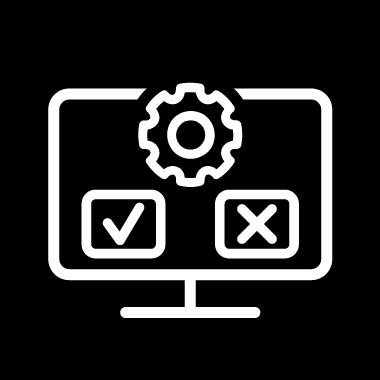
How do you think about your website? It is a kind of an office sign? Or a poster? Or a tool to sell your product? It’s all of the above and more. Your website is the face of your company on the web. It is one of the most important factors along with your business model and branding that makes your business succeed or fail.
Let’s say you have a solid business model, a competitive product, and a great brand identity. Is this enough to succeed? Most likely not. Your business needs to bring together all three components together, and your website is where it all happens. Today, more than 3/4 of all consumers check out your website before deciding to purchase. Simply put, your website is directly responsible for 75% of your sales. Even when the orders are made in-person or over the phone, the website is the key to your business receiving this visit or a phone call.
But even more, your website is not just a sales tool – it is your reputation builder. And your reputation is your future revenue. So, your website is 75% of your revenue today plus your revenue in the future. This is why every dollar you invest in the development of your website will influence your revenue for years to come. In making websites, we use a thorough, well-tested, and continuously improving process. This is how we develop websites that help your business grow by being:
- Simple
- Attractive
- Convenient
- Useful
- Memorable
Let us tell you more about the process.

We interview the stakeholders (CEO, Sales managers, marketing managers, etc.). We research your business model, sales and marketing processes, the product that you sell, your target audience, and your competition. At the end of the discovery stage, we create a summary report that will lay the foundation for the website design.

Based on all information gathered during the discovery stage, we develop a sitemap – a flowchart that schematically shows all the pages and lists the main functionalities and the content description of each page. This follows by discussions and revisions as necessary. The result is a general blueprint of the website.

This is a separate and an optional stage that begins concurrently with the sitemap development. The SEO analysis includes the analysis of the main keywords that the users use to search for your (and similar) products. The result of the analysis is a comprehensive SEO report that will be helpful in the development of the website from key components (such as news section or a blog) to specific keywords and phrases that should be used in the key website areas to improve its organic ranking in Google search.

At this stage each page is placed into its own visual scheme – a detailed map that identifies the content of the page, such as menus, text, and image objects. The business need for each specific page is the primary consideration in the page’s functionalities and informational content. We go over every page, receive your feedback, and modify the wireframes as necessary. At the end of this process, we have a detailed blueprint for every page, which allows us to proceed with the design.

Home page is the most important part of your website. It is what influences the conversions. We provide several options for the home page design and discuss each of them with you to identify the path for revisions and the improvement. Typically, a home page receives 2-4 rounds of revisions. After the Home page is approved, we have a set style for the entire website.

Based on the Home page design style we develop the designs of the top-level pages. If the website is simple, the top-level would be the only level of the pages in the website hierarchy. More often, there are 2 or 3 levels of pages. Each page is discussed and revised as necessary.

Based on the approved design of the top-level pages we design all the rest of the pages. Each page is also discussed and revised as necessary.

This is the final design stage where, together with you, we look over all the pages, content, and functionalities, to ensure that the design is complete and is ready for coding. Any last corrections to the design are done at this stage.

There are a variety of ways to create your website on the back end – anything from a custom-coded website with the custom Content management system to WordPress to drag-and-drop solutions. More than half of the websites don’t need to be hard-coded and instead can be build using drag-and-drop platforms, such as Webflow or Wix, which reduces the cost of the website build and makes the maintenance more user-friendly.

This optional stage is when we connect all third-party platforms and services to your website. For example, e-commerce (e.g. Shopify or WooCommerce), billing/invoicing (such as QuickBooks), CRM (such as SalesForce), Google and Meta ads, external servers, dashboards, etc.

After the website is ready, we perform a series of thorough testing of different features and functionalities. Any bugs and errors are corrected before we hand over the beta version to the client. You also test the site on your end to ensure that the UI/UX and the features work as intended and envisioned.

This is an optional stage when we fill the website with the content that you provide to us. Any generic content, such as stock images, are sourced by us, discussed with you and modified as necessary to achieve the right look and feel of the complete website. Alternatively, we collaborate with expert content creators, and we can generate all the content for your website.

After all the content is ready (or no content if you prefer to fill the website with the content in-house), we transfer the website to your hosting, set up all the records to ensure that the domain, the web hosting, and your business email function correctly, and add the SSL certificates to the main website and any subdomains. At the hand-over time, we also provide you with a detailed manual that describes the website maintenance and updating features, the admin panel, and the back end (the server structure, the script files, etc.)

We always offer a warranty that the website that we created is free from errors and bugs, and functions as intended. In very rare instances when any errors are found post-launch, we promptly correct those at no expense to the client. We can also provide extended support to the website updates and maintenance as a separate service.
